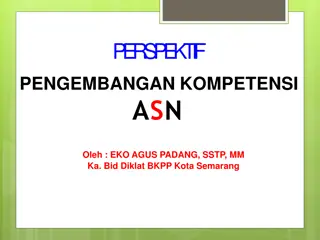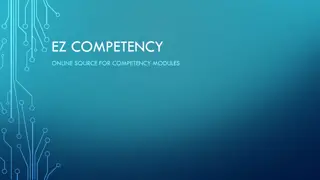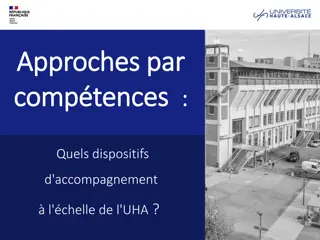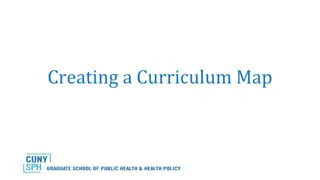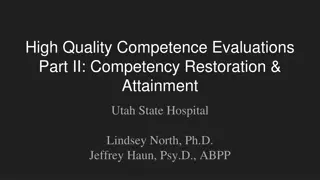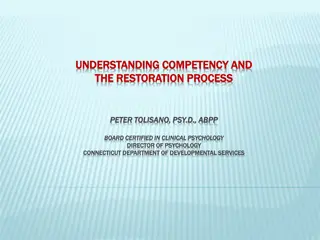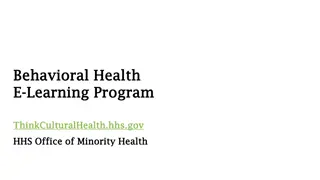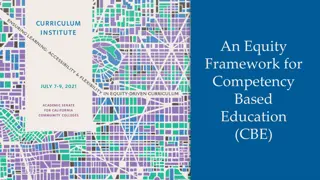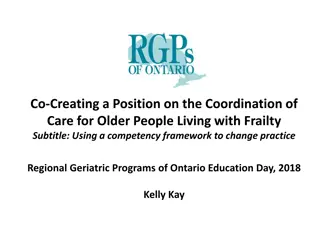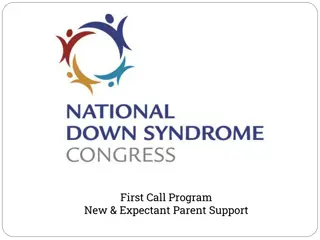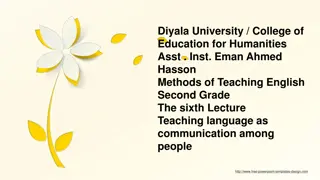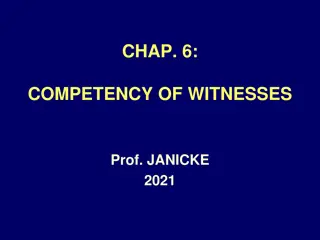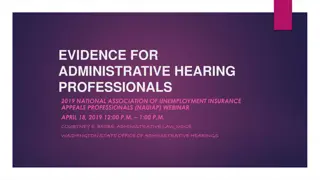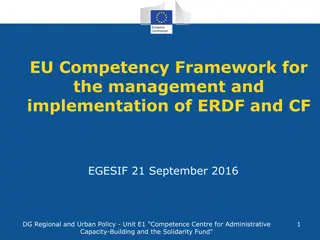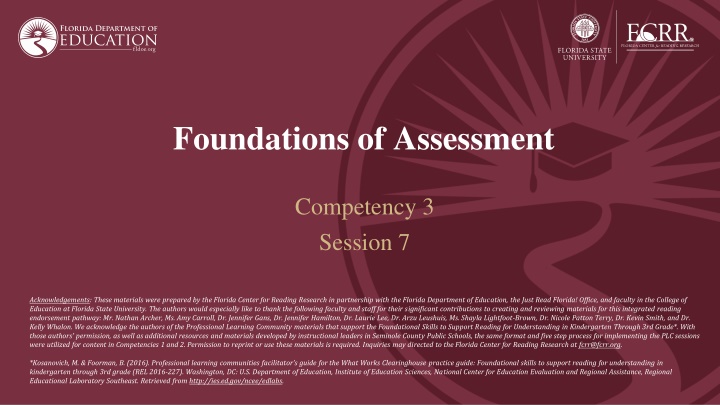
Causes of Reading Difficulties and Effective Assessment Strategies
Explore the causes of reading difficulties, including ineffective instruction and individual differences, in this comprehensive module. Learn how to collect data effectively for targeted planning and understand the importance of a Multi Tiered Systems of Support Model.
Download Presentation

Please find below an Image/Link to download the presentation.
The content on the website is provided AS IS for your information and personal use only. It may not be sold, licensed, or shared on other websites without obtaining consent from the author. If you encounter any issues during the download, it is possible that the publisher has removed the file from their server.
You are allowed to download the files provided on this website for personal or commercial use, subject to the condition that they are used lawfully. All files are the property of their respective owners.
The content on the website is provided AS IS for your information and personal use only. It may not be sold, licensed, or shared on other websites without obtaining consent from the author.
E N D
Presentation Transcript
Foundations of Assessment Competency 3 Session 7 Acknowledgements: These materials were prepared by the Florida Center for Reading Research in partnership with the Florida Department of Education, the Just Read Florida! Office, and faculty in the College of Education at Florida State University. The authors would especially like to thank the following faculty and staff for their significant contributions to creating and reviewing materials for this integrated reading endorsement pathway: Mr. Nathan Archer, Ms. Amy Carroll, Dr. Jennifer Gans, Dr. Jennifer Hamilton, Dr. Laurie Lee, Dr. Arzu Leushuis, Ms. Shayla Lightfoot-Brown, Dr. Nicole Patton Terry, Dr. Kevin Smith, and Dr. Kelly Whalon. We acknowledge the authors of the Professional Learning Community materials that support the Foundational Skills to Support Reading for Understanding in Kindergarten Through 3rd Grade*. With those authors' permission, as well as additional resources and materials developed by instructional leaders in Seminole County Public Schools, the same format and five step process for implementing the PLC sessions were utilized for content in Competencies 1 and 2. Permission to reprint or use these materials is required. Inquiries may directed to the Florida Center for Reading Research at fcrr@fcrr.org. *Kosanovich, M. & Foorman, B. (2016). Professional learning communities facilitator s guide for the What Works Clearinghouse practice guide: Foundational skills to support reading for understanding in kindergarten through 3rd grade (REL 2016-227). Washington, DC: U.S. Department of Education, Institute of Education Sciences, National Center for Education Evaluation and Regional Assistance, Regional Educational Laboratory Southeast. Retrieved from http://ies.ed.gov/ncee/edlabs.
Purpose of this Module This course provides a foundation in assessment with an emphasis on literacy/reading and is required for the Florida Reading Endorsement (Competencies 3) Grounded in the principles of research-based reading instruction and the Reading Endorsement Guiding principle that teaching reading for understanding is an ongoing systematic, problem solving process, teachers will implement and analyze assessments, and select appropriate instruction/interventions based on the collected data.
What is a Multi Tiered Systems of Support (MTSS) Model? We can t take a wait and see approach
Causes of Reading Difficulties (1) ineffective instruction and (2) individual differences 1. Ineffective instruction may reflect Limited time dedicated to building necessary prerequisite knowledge or skills as well as learning new skills or content Lack of teacher content or pedagogical knowledge (i.e., how to deliver instruction) Commitment to ineffective methods over evidence-based practices For example, some schools continue to reject the idea of systematically teaching phonics despite clear evidence that this approach works. 2. Individual differences Individual learning differences can impact learning. Motivation to learn also influences skill development.
What is Dyslexia? Children identified with dyslexia have trouble decoding, spelling, and reading fluently. https://www.youtube.com/watch?v= klG8vHRLtJU&t=3s These difficulties are associated with phonological processing deficits or specific language-based difficulties. For children with dyslexia, comprehension may also be a problem because of difficulty building vocabulary and background knowledge often gained through effective reading.
Importance of Early Identification and Early Screening Reading Rockets Interview with Dr. Jack Fletcher https://www.youtube.com/watch?v=0FJJLhJweWk&list=PLLxDwKxHx1yJkKZlbnu6g c_lBbB4TyxQU&index=2 https://www.youtube.com/watch?v=cPHK5IHKva4&list=PLLxDwKxHx1yJkKZlbnu6 gc_lBbB4TyxQU&index=4
Identifying Dyslexia In the past, children with reading disabilities including dyslexia were identified using a model called the severe discrepancy model Educational achievement in reading was much lower than would be expected based on cognitive or IQ tests Today, most advocate for using multi-tiered systems of support model to avoid a wait to fail approach A delay receiving additional or targeted instructional services fails to address the foundational skills children require to catch their peers or even prevent the identification of a reading disability IDEA, states that the use of the severe discrepancy model must not be required for identification of learning or reading disabilities including dyslexia Some students with complicated learning profiles such as twice exceptional students (most commonly, gifted students with a reading disability or dyslexia) will need cognitive or intellectual testing to demonstrate their unique learning profile and needs
Steps in MTSS Models A universal screener is provided to all students to determine progress in reading Diagnostic measures of specific reading skills associated with reading disabilities are used to pinpoint target areas for intervention Tiered interventions are provided based on results of initial screening and progress monitoring. All children receive quality, evidence-based Tier 1 instruction in reading. Tier II instruction is provided in areas identified in early screeners as needing additional instruction. Tier III instruction is intensive, delivered in small groups or 1:1 and specifically targets a need identified through progress monitoring. Tiers are not fixed as learners may move to different Tiers at different times. Progress Monitoring is provided every 2-3 weeks in Tiers II and III and less frequently in Tier 1. Identification for Special Education occurs when children are not making adequate progress in targeted instruction.
Assessment to Determine Dyslexia (International Dyslexia Association) Assessments should measure Phonological Awareness Phonological or Language-Based Memory ability to recall sounds, syllables, words Rapid Automatic Naming speed of naming objects, colors, digits, or letters Receptive Vocabulary understanding of words heard Phonics Skills understanding of the letter/sound correspondence Decoding ability to use use letter/sound correspondence to identify words Real Words Nonsense Words Oral Reading Fluency ability to read accurately and at a rate that facilitates understanding Single Words Sentences and Paragraphs Spelling Writing Sentence Level Paragraph Level
Data Based Individualization (DBI) Step 1: Implement the current validated intervention program with increased intensity (e.g., smaller group size, more time) Step 2: Collect frequent progress monitoring data to determine whether the student is responding Step 3: If the student continues to struggle, collect diagnostic information to identify difficulties Step 4: Use the diagnostic data along with educator expertise to modify or adapt the intervention to meet the student s individual need Step 5: Continue to collect progress monitoring data at regular intervals to determine responsiveness and make adaptations as needed
Meet Jarred Jarred is in the second grade. His teacher, Mr. Noles is concerned because Jarred does not appear to be reading at the same level as many of his peers. Mr. Noles recently differentiated his instruction by changing groupings and placing Jarred in a smaller group for greater intensity, but remains worried. Mr. Noles is using a Tier 1 reading curriculum, Wonders. Now that they have reached mid-point, Mr. Noles has decided to test Jarred and get a better picture of his overall reading ability to plan more targeted instruction.
Case Study Review the testing data on Jarred Respond to the provided questions Consider: Is comprehension hindered by poor decoding? Is comprehension hindered by limited prior knowledge and vocabulary? Is comprehension hindered by poorly developed strategies? What evidence do you have to answer the questions above? What evidence are you lacking?

